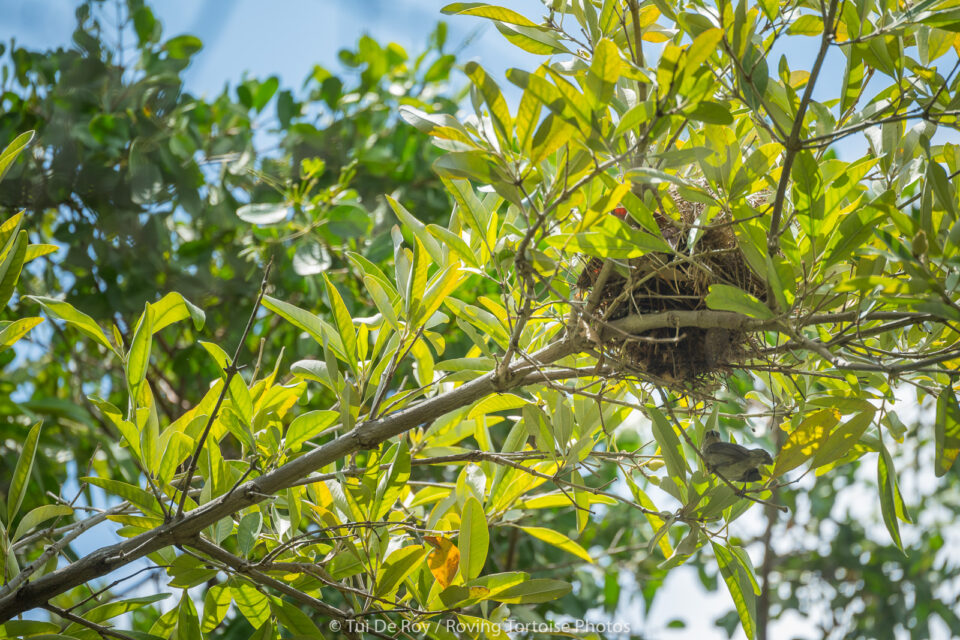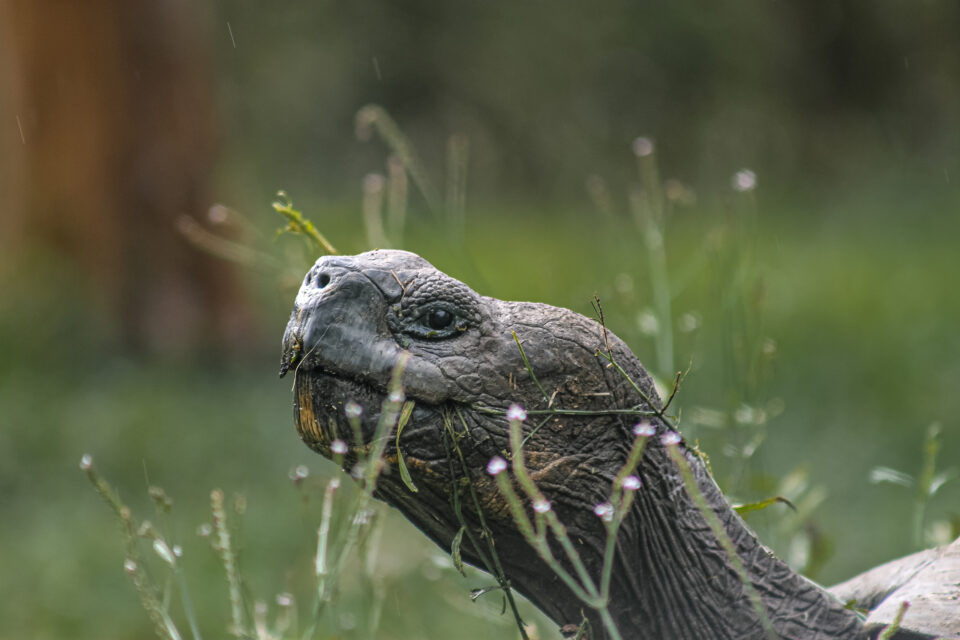

15 Mangrove Finch Chicks Successfully Fledged
15 critically endangered mangrove finch chicks from the 2016 breeding season have successfully fledged after being hand-reared at the CDRS in Galapagos.
15 critically endangered mangrove finch chicks from the 2016 breeding season have successfully fledged after being captive-reared by scientists from the Mangrove Finch Project.
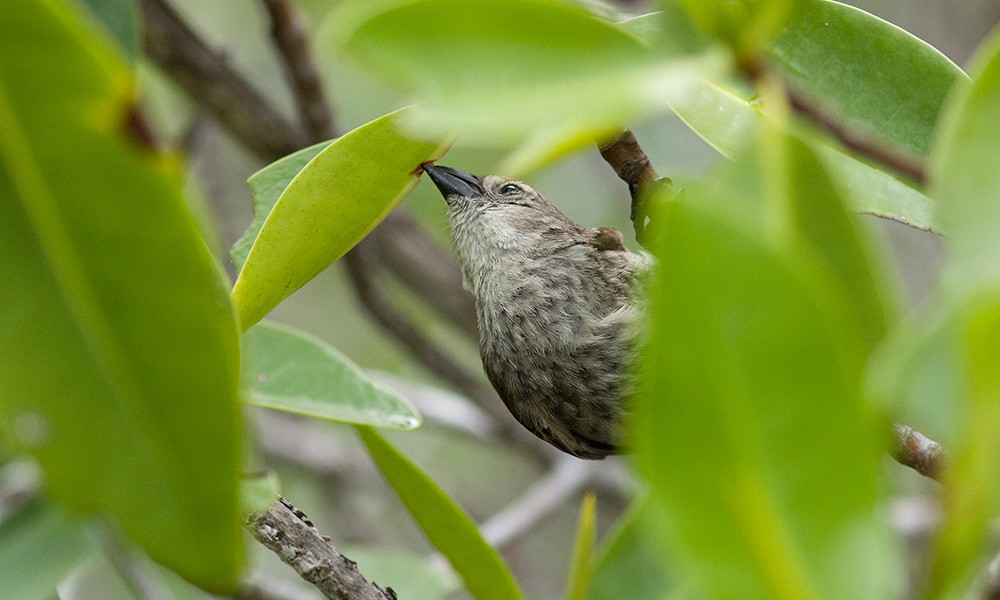
© Michael Dvorak
This is the third year of captive-rearing for the rarest of Darwin’s finches, which has an estimated population of 80-100 individuals, inhabiting just 32 hectares on Isabela island.
The team from the Mangrove Finch Project, which is funded by GCT, collected nests from the mangrove finch habitat from 6 February to 1 March for the 2016 breeding season.
8 nests were collected, with 15 eggs and 4 young nestlings. The first eggs and the nestlings arrived at the captive rearing facility at the Charles Darwin Research Station (CDRS) on 16 February and the very next day the first eggs hatched, later fledging on March 4. The first chick, brought back from the wild as small nestling, fledged on 23 February.
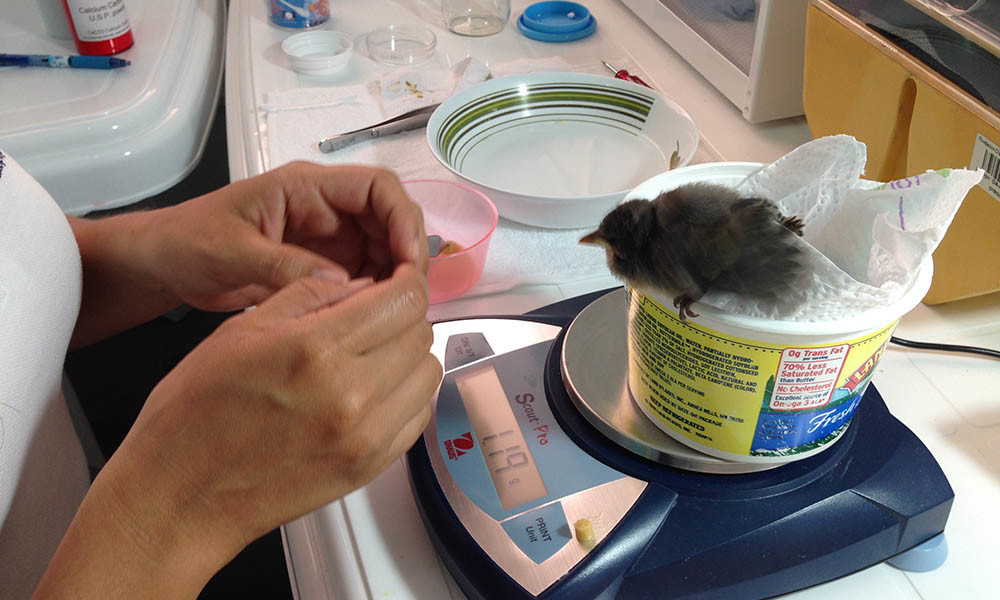
© Rich Switzer
Eggs and chicks are kept in a specially designed room under quarantine conditions to ensure that they do not come into contact with any avian diseases. The chicks are fed on a diet developed for insectivorous passerines and adapted to products available in Galapagos, such as papaya and invasive wasp nests. For the first 15 days they are fed every hour from 6am until 8pm.
After spending 8 weeks in the captive-rearing room at the CDRS, the 15 fledglings will be returned to their natural habitat at Playa Tortuga Negra, Isabela. They will then be tagged and monitored by scientists and park rangers.
GCT is the biggest funder of the Mangrove Finch Project, so it is thanks to our supporters here in the UK and around the world that this vital work has been possible. However, the project still needs further funding throughout this year. If you would like to help support the project to release and track these fledglings, please make a donation.
Donate to the Mangrove Finch Project
Due to parasitism by an introduced parasitic fly, Philornis downsi, all wild mangrove finch hatchlings have a high mortality rate. By collecting and hand-rearing the chicks from the first nests, the adult mangrove finches will attempt to breed again, and rear their own young, effectively doubling the number of chicks raised each year.
Mangrove Finch Project leader, Francesca Cunninghame said:
“It has been very rewarding to conduct head-starting of the critically endangered mangrove finch for the third season running working closely with both local and international partners and collaborators. Although climatic conditions were dry and fewer pairs were nesting than anticipated, we were still able to collect sufficient nests to provide us with a good number of chicks to raise, while the birds are able to re-nest in the wild and rear their own young. Even better was finally obtaining wild sightings of two fledglings hand-reared in previous years, with this observation we can be sure that our efforts are producing juveniles capable of surviving in the wild and our goal of boosting the population of the rarest bird in the Galapagos can most likely be achieved through head-starting”.
Other exciting discoveries were made during the fieldwork…
During the nest collection field work, the team also found the first wild-fledged mangrove finch to be observed in February in seven seasons.
Two fledglings which were captive-reared in 2014 and 2015 were observed in the wild. They could be identified by their unique coloured rings. This is very positive news for the Mangrove Finch Project as this is the first time these birds have been spotted since their release.
The Mangrove Finch Project is a bi-institutional project carried out by the Charles Darwin Foundation and Galapagos National Park Directorate in collaboration with San Diego Zoo Global and Durrell Wildlife Conservation Trust. The project is supported by Galapagos Conservation Trust, The Leona M. and Harry B. Helmsley Charitable Trust, The Swiss Friends of Galapagos, as well as several individual donors.
Related articles

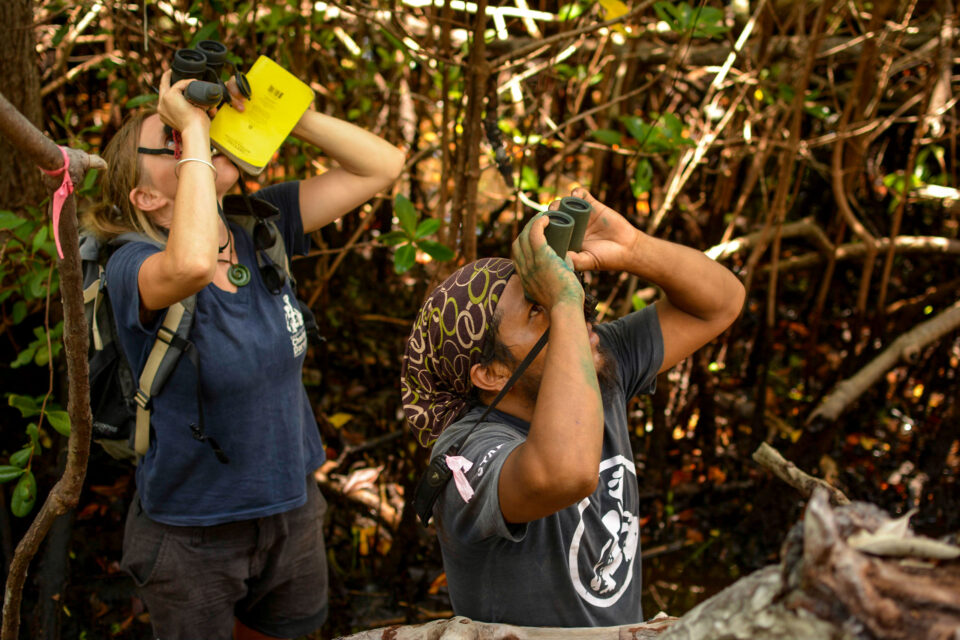
Mangrove Finch Project update
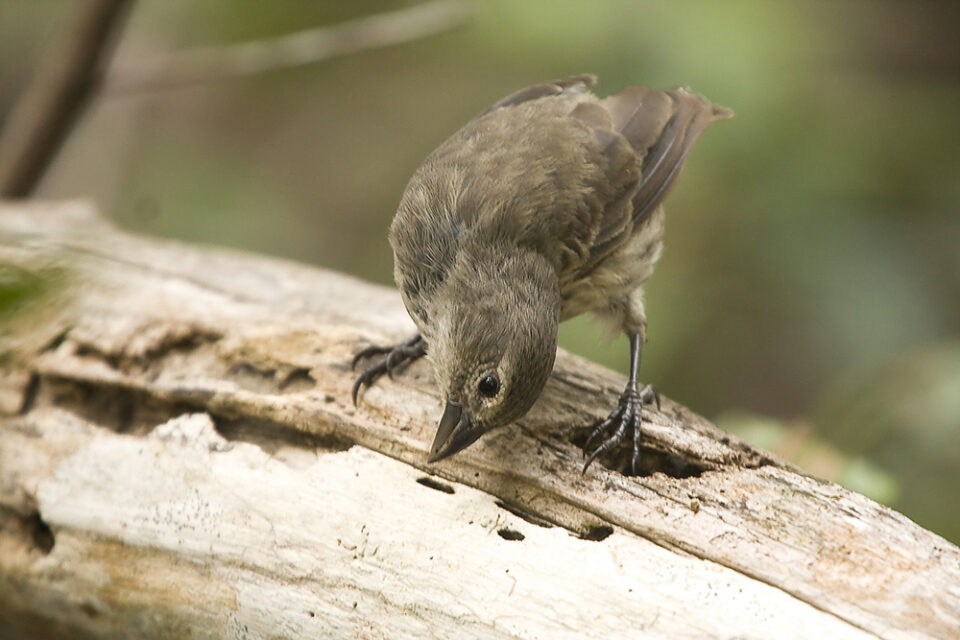
Mangrove Finch Project update
